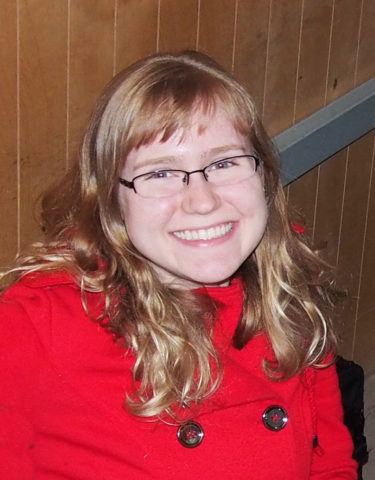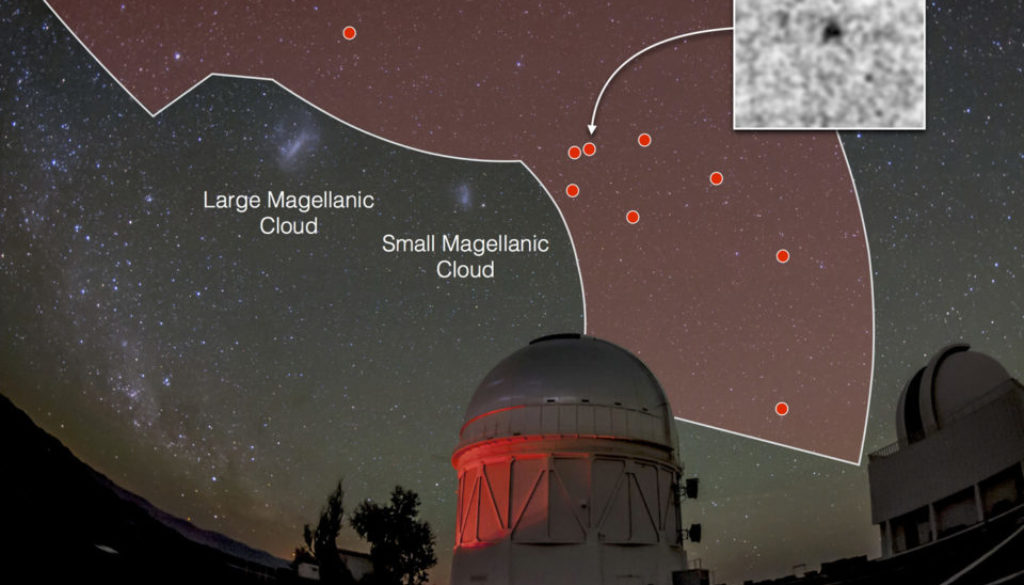Dark Energy Survey Finds Eight New Dwarf Galaxy Candidates
Using one of the world’s most powerful digital cameras, scientists with the Dark Energy Survey have discovered eight more faint celestial objects hovering near our Milky Way galaxy, along with signs indicating that they — like the objects found by the same team earlier this year — likely are dwarf satellite galaxies, the smallest and closest known form of galaxies.
Three Texas A&M University astronomers — assistant professor and Munnerlyn Astronomical Instrumentation Laboratory manager Jennifer Marshall and graduate students Ting Li and Katelyn Stringer — are authors on the paper reporting the collaboration’s findings, submitted August 14 to arXiv. A fourth Texas A&M astronomer, Darren DePoy, deputy director of Texas A&M’s George P. and Cynthia Woods Mitchell Institute for Fundamental Physics and Astronomy and Munnerlyn Lab director, served as project scientist for the Dark Energy Camera (DECam).


Satellite galaxies are small celestial objects that orbit larger galaxies, such as our own Milky Way. Dwarf galaxies can be found with fewer than 1,000 stars, in contrast to the Milky Way, an average-size galaxy containing billions of stars. Scientists have predicted that larger galaxies are built from smaller galaxies, which are thought to be especially rich in dark matter, the substance that makes up about 25 percent of the total matter and energy in the universe. Dwarf satellite galaxies, therefore, are considered key to understanding dark matter and the process by which larger galaxies form.
The main goal of the Dark Energy Survey (DES), as its name suggests, is to better understand the nature of dark energy, the mysterious stuff that makes up about 70 percent of the matter and energy in the universe. Scientists believe that dark energy is the key to understanding why the expansion of the universe is speeding up. To carry out its dark energy mission, DES takes snapshots of hundreds of millions of distant galaxies. However, some of the DES images also contain stars in dwarf galaxies much closer to the Milky Way. The same data can therefore be used to probe both dark energy, which scientists think is driving galaxies apart, and dark matter, which is thought to hold galaxies together.
Scientists can only see the faintest dwarf galaxies when they are nearby, and had previously only found a few of them. If these new discoveries are representative of the entire sky, there could be many more galaxies hiding in our cosmic neighborhood.
“Just this year, more than 20 of these dwarf satellite galaxy candidates have been spotted, with 17 of those found in Dark Energy Survey data,” said Alex Drlica-Wagner of the U.S. Department of Energy’s (DOE) Fermi National Accelerator Laboratory, one of the leaders of the DES analysis. “We’ve nearly doubled the number of these objects we know about in just one year, which is remarkable.”
Marshall notes that Texas A&M’s trio is among the “top tier” of authors, which means that each did some of the data analysis that went into the paper.
“I think it’s particularly noteworthy that the only Texas A&M authors on the paper are women — that doesn’t happen often in astronomy,” Marshall added. “We’re not there just because we’re DES Builders — although Ting and I also are builders, along with Professor DePoy. We helped build the instrument, and now we’re using it to do real science.”
Although Stringer hasn’t yet achieved coveted builder status, Marshall says she found her impressive enough last summer to invite her to arrive early during this one, enabling her to get a jump-start on her official Texas A&M graduate school career.

“Katelyn was in our REU [Research Experiences for Undergraduates] program last year working with Lucas Macri, and she was admitted into our graduate program to start this fall,” Marshall said. “I invited her to arrive this summer before classes start to do some science with me and also help out with this summer’s REU students. We knew she would be great, and she did enough significant work in her first week on the job this summer to earn authorship.”
Since joining the Texas A&M astronomy program in 2008, DePoy has praised the strength of the university’s undergraduate and graduate programs in science and engineering, as well as the collaborative, interdisciplinary research environment campus-wide that helps talented students and faculty capitalize on such elite opportunities for invaluable international experience and exposure.
“Ting and Jennifer were heavily involved in helping to build components of the Dark Energy Camera and have now become very active in analyzing and interpreting the data and results,” DePoy said. “Katelyn joined recently and has jumped right in to the effort. They all had strong roles in the latest discovery of these additional dwarf galaxies and are showing the general scientific power of the Dark Energy Survey.
“Not coincidentally, these objects contain faint stars that will be fascinating to study further with the Giant Magellan Telescope, and Jennifer is helping to lead the effort to build a special instrument to do those studies once the telescope is built.”
Read more on today’s announcement and its broader significance via the official press release from Fermilab.
View the Dark Energy Survey analysis online, and learn more about Texas A&M astronomyhere.
# # # # # # # # # #
About the Dark Energy Survey: The Dark Energy Survey is a collaboration of more than 300 scientists from 25 institutions in six countries. Its primary instrument, the 570-megapixel Dark Energy Camera, is mounted on the 4-meter Blanco telescope at the National Optical Astronomy Observatory’s Cerro Tololo Inter-American Observatory in Chile, and its data is processed at the National Center for Supercomputing Applications at the University of Illinois at Urbana-Champaign. Learn more at http://www.darkenergysurvey.org/.
About Research at Texas A&M University: As one of the world’s leading research institutions, Texas A&M is at the forefront in making significant contributions to the storehouse of knowledge, including that of science and technology. Research conducted at Texas A&M represented annual expenditures of more than $820 million in FY 2013, ranking Texas A&M in the top 20 of the National Science Foundation’s most recent survey of research and development expenditures among U.S. colleges and universities. Recently reported FY 2014 research expenditures exceed $854 million. That research creates new knowledge that provides basic, fundamental, and applied contributions resulting in many cases in economic benefits to the state, nation and world. To learn more, visit http://research.tamu.edu.
-aTm-
Contact: Shana K. Hutchins, (979) 862-1237 or shutchins@science.tamu.edu or Dr. Jennifer Marshall, (979) 862-2782 or marshall@physics.tamu.edu
The post Dark Energy Survey Finds Eight New Dwarf Galaxy Candidates appeared first on College of Science.
